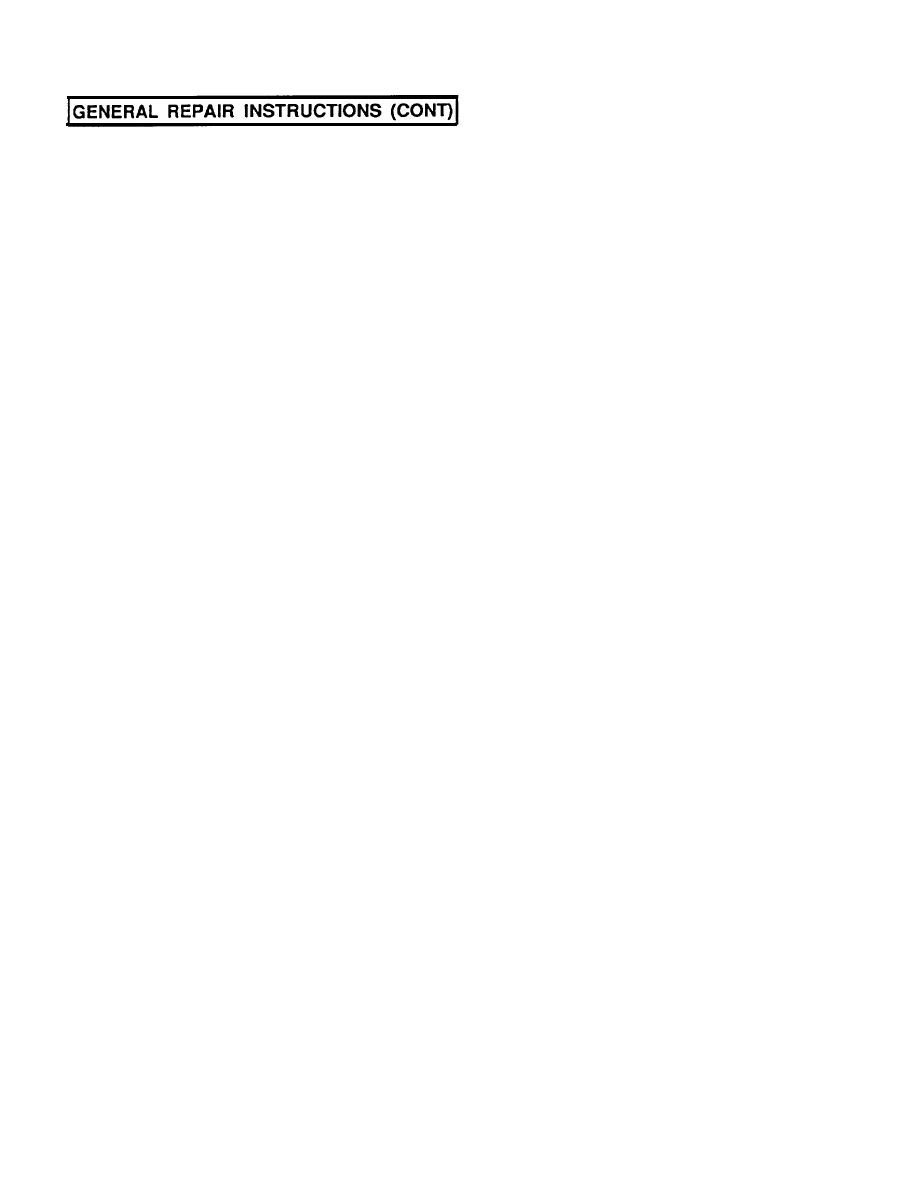 |
|||
|
|
|||
|
Page Title:
General Repair Instructions cont'd |
|
||
| ||||||||||
|
|
 TM 5-2420-224-20-1
NOTE
The following procedure is used with polished and machined steel parts not protected by
cadmium, tin, copper, or other plating or surface treatment. Bare metal surfaces must be
free of moisture when protective coating is applied.
4.
Protective Parts. During repair operations, protect bare steel surfaces from rusting when not
actually undergoing repair work. Dip parts in, or spray them with, corrosion preventive
compound. The same protective coating may be applied to other metals to prevent rust.
Aluminum parts may require protection in atmospheres having a high salt content. Steel parts
must always be protected.
Welding. Welding and brazing may be used to repair cracks in external steel parts, such as
5.
brackets, panels, and light framework. These repairs should be made only when replacement
parts are not available. Do not weld or braze castings, running pads, or parts under great
stress, except in emergencies. When welding is required, refer to TM 9-237.
6.
Stud Installation. When installing studs in engine block and axle housings, use a driver
designed for the stud to be installed. A worn stud driver may damage the end thread. This
makes it necessary to use a chasing die before a nut can be screwed on. This procedure will
remove cadmium plating and allow corrosion, which will make future disassembly difficult and
cause stud to be backed out with nut. Before driving a stud, inspect hole for chips and liquid.
Blow out any foreign matter. Start stud by hand. If it will not start into hole, it is too large or
has defective end thread. Before final insertion, coat thread with antiseize compound; turn stud
in slowly to prevent overheating and galling of casting metal.
7.
Electrical Parts. Replace all broken, worn, or burned electrical wiring. Wires with several broken
strands must be replaced. Broken strands will increase the resistance of the wire and impair
efficiency of electrical components, especially the ignition system. When soldering is required,
refer to TB SIG 222.
Hoses. Replace all broken, frayed, crimped, or soft flexible lines and hoses. Replace stripped
8.
or damaged fittings. Replace entire flexible hose if fittings are damaged. Make sure hose
clamps do not crimp hoses.
Fasteners. Replace any bolt, screw, nut, or fitting with damaged threads. Inspect tapped holes
9.
for thread damage. If cross-threading or galling is evident, retap the holes for the next oversize
screw or stud. When retapping will weaken the part, or when the cost of the part makes
retapping impractical, replace the damaged part. Chasing threads with the proper size tap or
die may often be enough.
10. Dents. Straighten minor body dents by bumping with a soft-faced hammer while using a
wooden block backing.
11. Sheet Metal Repair. Repair minor skin cracks by installing patches.
12. Mounting Holes. Reshape oval mounting holes to round. Drill to receive bushing with required
inner diameter. Stake bushing in place with center punch.
2-20
|
|
Privacy Statement - Press Release - Copyright Information. - Contact Us |